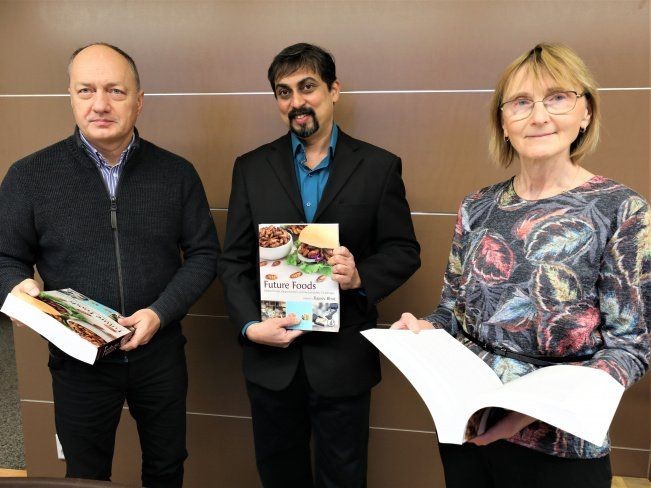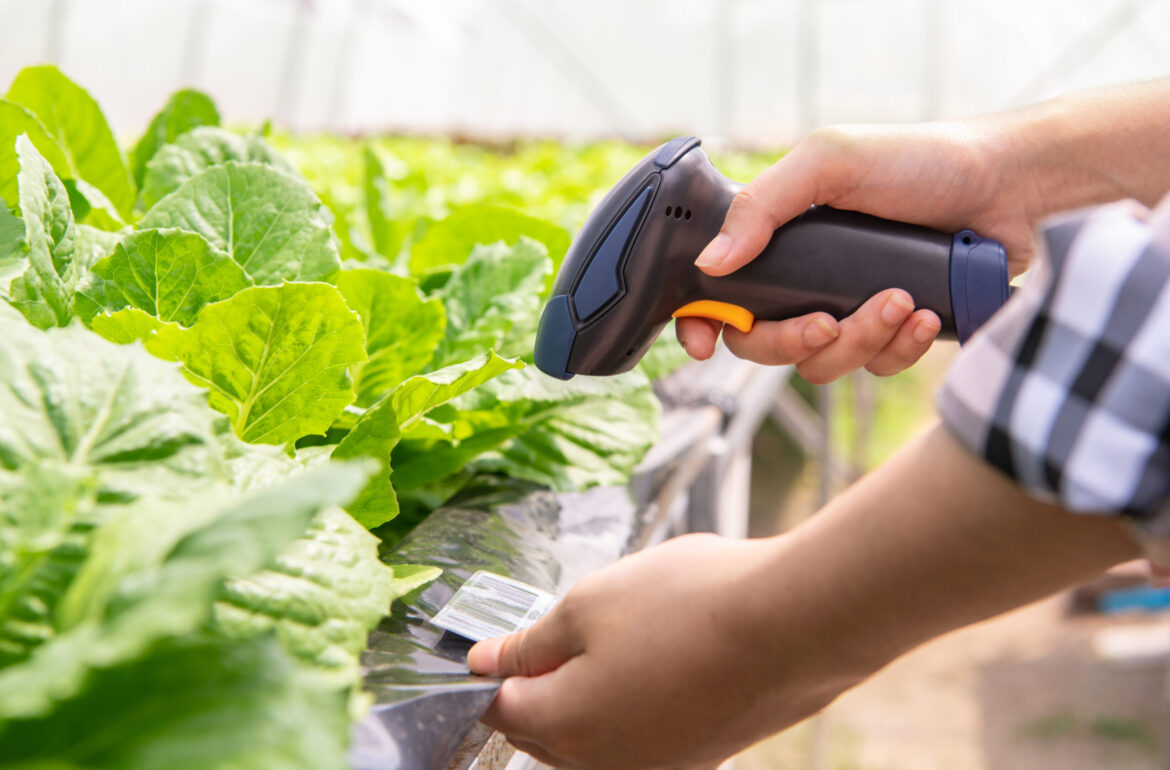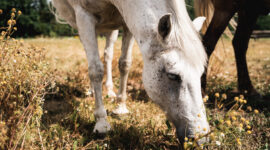What will future generations put on their plates – based on science?
It’s 30 years from now, and you’re ordering food at a local restaurant. It’s a vegetarian place, like most of them in your area these days. Meat is becoming a luxury people only eat at Christmas. Lacking Vitamin D and protein? Here’s some algae-based 3D-printed salmon with a glass of fortified almond milk for you. Garnish it with some locally grown salad! The herbs were picked from the roof. If you have any doubts, you can scan the barcode to follow your meal’s complete journey.
This is how Rajeev Bhat, a professor of food science at the Estonian University of Life Sciences, imagines the future.
Bhat may sound like a dreamer, but as he sees it, the human race has no choice but to change its eating habits. Even if fuelling our bodies is a basic need, it’s becoming complicated.

There is a lot of ploughing, planting, fertilising and carrying to be done to feed the nearly eight billion people on this planet. Global food demand is even expected to double by 2050.
How we eat now is exhausting the environment and killing our ecosystems.
Even leaving the environment aside, global consumption of food makes little sense. On the one hand, at least 700 million people in the world face going hungry, according to the Food and Agriculture Organization of the United Nations. On the other hand, most of the world’s population lives in countries where being overweight is killing more people than being underweight.
It’s also paradoxical that we ship food globally, but local farmers are barely surviving in many parts of the world. People worry about air and water pollution, but far less visible soil pollution is just as dangerous. Our fruits, vegetables and meat get contaminated through it. Ischaemic heart disease linked to pollutants in the air, soil and water is the number-one killer in the world.
Rather than moping about all of this, Bhat wrote a book – Future Foods: Global Trends, Opportunities, and Sustainability Challenges was published in December 2021.
“We need to be smarter and start planning ahead,” says Bhat, who is the EU-funded ERA Chair for Food (By-) Products Valorisation Technologies. Hence why he compiled the latest science on food and agriculture to prepare for what’s to come.
Back to our roots
Bhat concludes that technology and education will be the two keywords for a cleaner and fairer future.
With the help of technology, people will return to their roots and artificial food will become obsolete, believes Bhat, who has over two decades of experience in the field of agri-food technology. He grew up in the south-west of India, but is now based in Estonia. “The future really is the past when it comes to food!” he says.
For Bhat, traditional food means minimal processing, natural, nutritious and healthy ingredients, primarily vegetarian. Bhat is convinced that the future is vegetarian. “Health-conscious and educated consumers will turn to vegetarian diets,” he says. “This is the predicted version of events within 20-30 years, keeping our carbon footprints in mind.”
Indeed, farm animals emit almost 64% of all ammonia, hugely contributing to air pollution. The WHO has estimated that air pollution is now globally a bigger killer than smoking, car accidents or HIV/Aids. Meat-lovers needn’t go without altogether though: insects will become an important source of protein. A meat-like taste will be created using plants and mushrooms.

To tackle the uneven share of access to food, technology is coming into play. Scientists and start-ups in many parts of the world are working to create more open and clear communication systems for how food travels. Tracking and tracing with a blockchain system is on the way, albeit taking baby steps. A Slovenian start-up has teamed up with the Egyptian government to reduce customs paperwork, while the United Nations is working to track the movements of cotton. In the future, Bhat believes shoppers will be able to scan a product’s barcode and see its journey from farm to shop, making sure it was a green and fair one.
Digitalisation is helping farmers keep an eye on waste and food loss, but also making their work more efficient.
3D-printing of foods will become more prevalent. Chilean scientists are already 3D-printing figurine-shaped food for children from nutritious seaweed. Next year, a Vienna-based vegan food technology company plans to start selling its 3D-printed salmon, made from algae and pea protein.
Designed food
More advanced data analysis will be available to design for people the right diet for their particular needs. Scientists all over the world are developing fortified designer foods. These products, with supplemented vitamins and minerals, are already available. In Sweden and Canada, Vitamin D is even added to milk by law to tackle its insufficiency in northern climes. Italian scientists are exploring the perfect food texture and consistency for the elderly.
Bhat hopes that through educating consumers, eating habits will gradually become healthier and greener, with people moving towards more traditional food. “I´m an optimist,” he admits. “Just look how smart kids are these days! With everything being digital, all the information you need is just one click away.”
Many of our eating habits have already changed during our lifetimes, but more is coming. What the next generation brings to the table will probably be a game-changer.
Written by: Marian Männi
This article was funded by the European Regional Development Fund through Estonian Research Council.
 Back
Back



